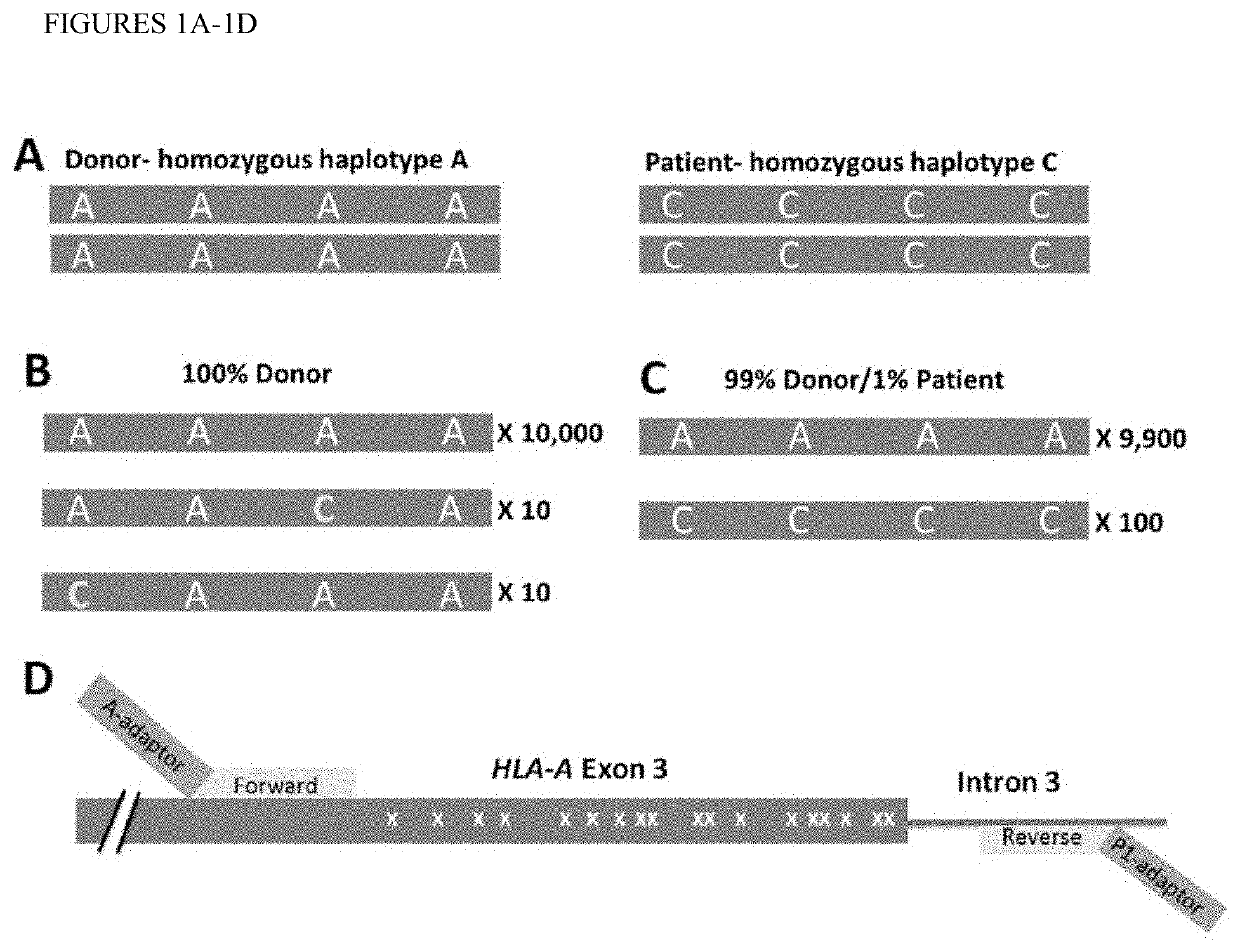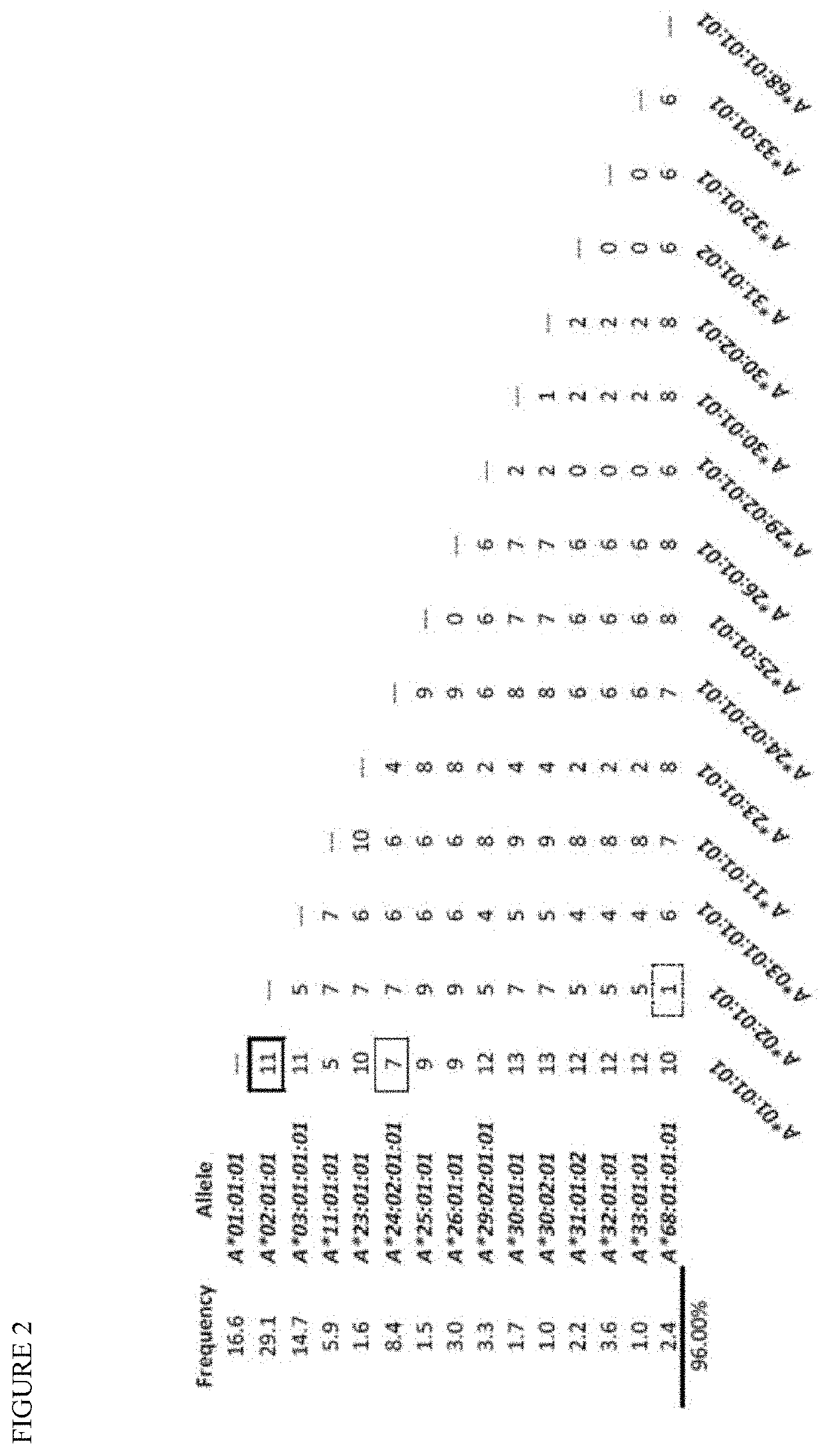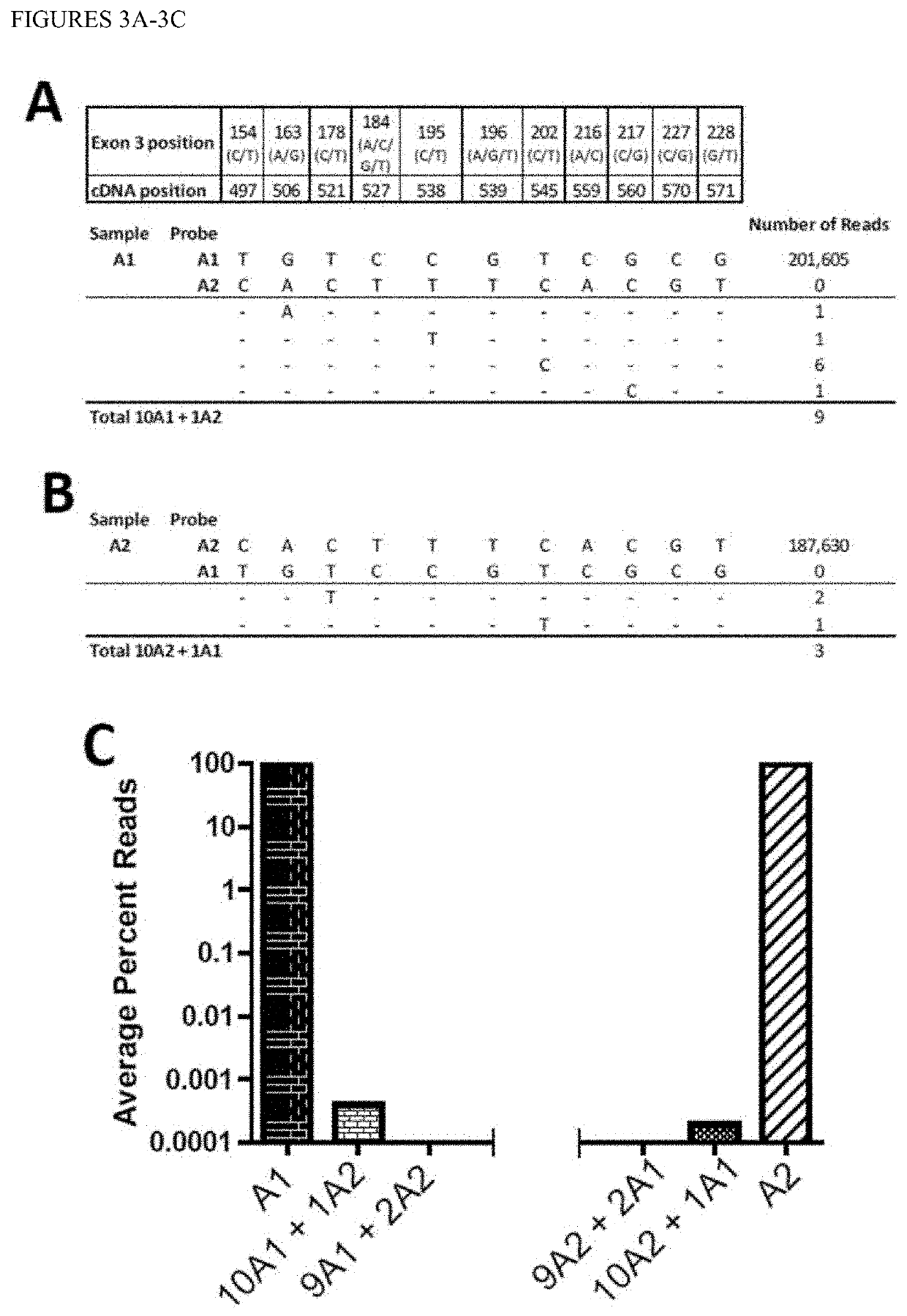Platform independent haplotype identification and use in ultrasensitive DNA detection
a technology of haplotype identification and ultrasensitive detection, applied in the direction of microorganism testing/measurement, biochemistry apparatus and processes, etc., can solve the problems of difficult str amplification, less attractive targets for snps, and difficult allogeneic stem cell transplantation (allosct), and achieve low-level patient dna, high sensitivity, precision and accuracy
- Summary
- Abstract
- Description
- Claims
- Application Information
AI Technical Summary
Benefits of technology
Problems solved by technology
Method used
Image
Examples
example 1
[0057]Analysis of HLA-A alleles. We performed alignments of common HLA-A alleles in the European-origin population using dbMHC database, publically accessible platform for DNA and clinical data related to the human Major Histocompatibility Complex (ncbi.nlm.nih.gov / gv / mhc / main.cgi?cmd=init last accessed Mar. 28, 2014). Regions with a high density of SNPs and flanked by non-polymorphic DNA were identified. One region, HLA-A exon 3 contained 18 possible SNPs and at least 15 major alleles in the European-origin population. We tested a series of primers surrounding this region and selected the best pair based on amplification efficiency and specificity (FIG. 1D, see methods). The number of SNP differences in this region between the most common alleles of the European-origin population was tabulated (FIG. 2). Some combinations of HLA-A alleles are easily differentiated whereas others are more difficult. For example, 11 SNPs differentiate allele A*01 from A*02 (double lined box), so that ...
example 2
[0058]Determination of “crosstalk” between molecules which vary by 11 SNPs. To test this experimentally, we sequenced two samples, one homozygous for A*01 and another homozygous for A*02, and analyzed each for the other allele (FIG. 3). The A*01 and A*02 samples contained approximately 200,000, perfect matching reads. Neither pure sample contained any perfect reads of the other haplotype. We then examined the A*01 sample files for reads containing a single A*02 SNP at each of the 11 positions and found an average of 0.3-0.8% reads that contained a single error from the perfect haplotype (FIG. 3A). When two SNPs of the opposite haplotype were searched for, no reads were obtained. Similar results were obtained with the pure A*02 sample (FIG. 3B). A double waterfall plot shows that when enough discriminating SNPs between two individuals' alleles exist, the assay is highly specific. (FIG. 3C).
example 3
[0059]HLA-A dose-response curve, accuracy, precision, and limit of detection (LD). To assess the accuracy and LD, we generated a dilution series from two cell lines with known HLA-A genotypes. These samples were chosen because the two alleles of interest (A*01 and A*02) vary from one another by 11 SNPs and both vary from the commonly shared allele (A*24) by 7 SNPs (FIG. 2). Dilutions were made with cell mixes varying from 1 in 1 million (0.0001%) to 1 in 100 (1%) using a total of 10 million cells for each dilution. DNA was isolated and PCR performed using 600 ng of DNA. We chose this relatively large amount of DNA based on the desire to achieve a LD of at least 1:10,000 (0.01%) and to exceed that target LD by using 10x excess DNA. This relatively high DNA input reflects approximately 100,000 genomes (based on approximately 6 picograms / haploid genome) and was chosen to prevent “bottlenecking” and resultant allele dropout. For example, if DNA representing only 100 genomes were analyze...
PUM
| Property | Measurement | Unit |
|---|---|---|
| temperatures | aaaaa | aaaaa |
| volume | aaaaa | aaaaa |
| frequencies | aaaaa | aaaaa |
Abstract
Description
Claims
Application Information
 Login to View More
Login to View More - R&D
- Intellectual Property
- Life Sciences
- Materials
- Tech Scout
- Unparalleled Data Quality
- Higher Quality Content
- 60% Fewer Hallucinations
Browse by: Latest US Patents, China's latest patents, Technical Efficacy Thesaurus, Application Domain, Technology Topic, Popular Technical Reports.
© 2025 PatSnap. All rights reserved.Legal|Privacy policy|Modern Slavery Act Transparency Statement|Sitemap|About US| Contact US: help@patsnap.com



